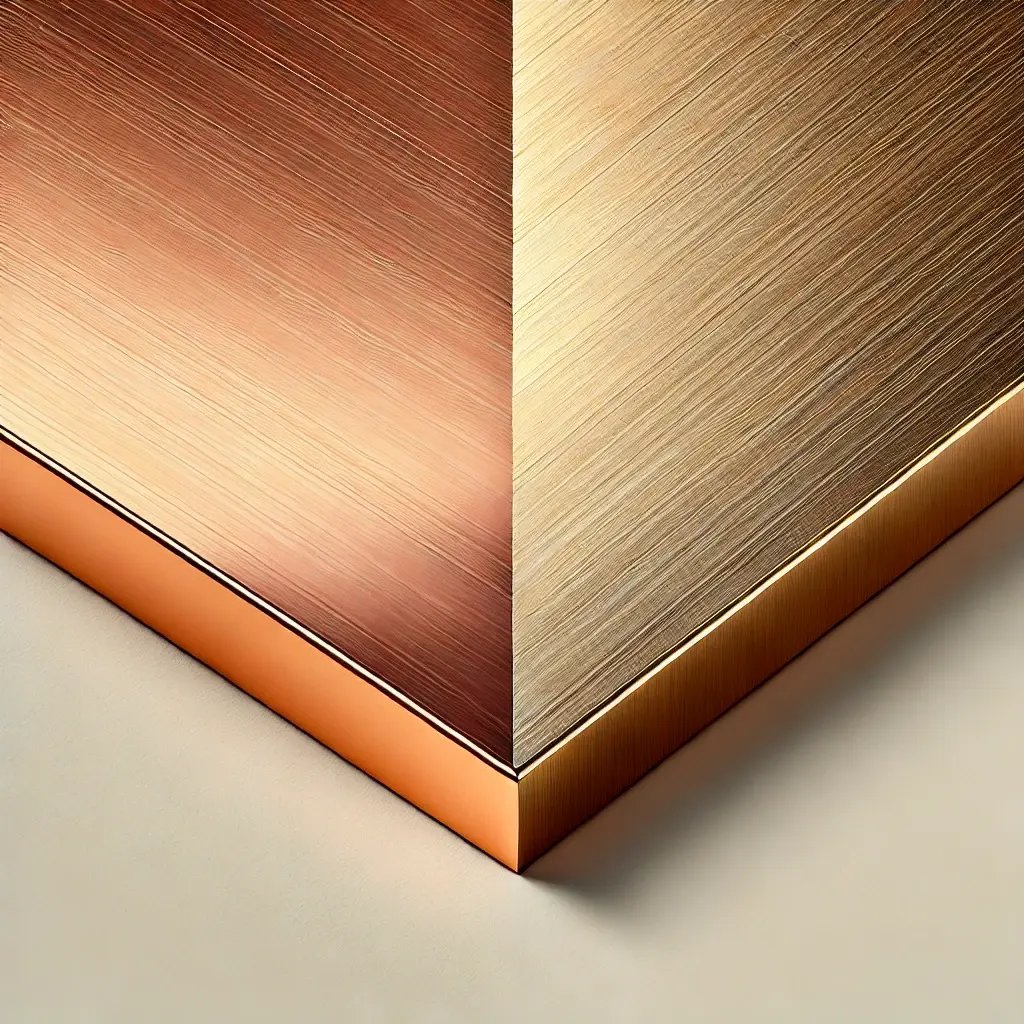Brass vs Bronze: Understanding the Differences
When choosing the right metal for a project, understanding the distinctions between brass and bronze is essential. Both alloys are composed of copper, but they differ in their composition, properties, and uses.
Whether you're considering materials for an industrial application or decorative purpose, knowing the brass vs bronze difference will help you make the right decision.

Composition and Basic Properties
Bronze Composition
-
Bronze is primarily composed of copper, with tin being the most common additive.
-
The typical ratio for bronze is about 88% copper and 12% tin, although these proportions can vary.
-
-
Additional elements such as aluminum, phosphorus, manganese, and silicon may be included to enhance specific properties.
-
This mix gives bronze its characteristic strength, durability, and resistance to corrosion.
-
The term "bronze metal" refers to any copper alloy with at least 60% copper content, with tin being the most significant component in the classic form.
-
-
"What is bronze made of?"
-
The answer focuses on the combination of copper and tin, though variations can include different alloying metals for specific applications.
-
For more insights into material compositions, visit our Technical Data page.
-
-
Aluminum bronze incorporates aluminum, providing additional strength and resistance to corrosion.
-
It is well-suited for marine applications.
-
Learn more about our expertise in such alloys on the Capabilities page.
-
Brass Composition
-
Brass is primarily made of copper and zinc, with the copper content typically ranging from 55% to 95%.
-
Zinc is the main element that differentiates brass from bronze.
-
-
Brass is more malleable than bronze due to the zinc content.
-
The ratio of copper to zinc can vary, leading to different alloys.
-
-
"What is brass made of?"
-
The basic composition is copper and zinc.
-
It may also contain small amounts of lead for machinability.
-
Detailed information about brass alloys can be found on our Color Matching Mechanics guide.
-
-
The mix of copper and zinc makes brass distinct.
-
The ratio of zinc significantly affects the properties of brass, including strength, corrosion resistance, and color.
-
-
Brass alloys with more zinc:
-
Are generally more ductile and malleable.
-
-
Brass alloys with less zinc:
-
Are harder and stronger.
-
-
Understanding the material composition of brass is essential for selecting the right alloy for specific needs, whether for aesthetic or functional purposes.
Distinguishing Characteristics
Physical Properties
When comparing brass vs bronze, physical properties such as hardness, melting points, and corrosion resistance stand out. Bronze, with its higher tin content, tends to be harder than brass and offers better resistance to wear and tear.
This makes bronze ideal for applications where durability is a top priority, such as bearings, bushings, and marine fittings.
Brass, being more malleable, is often chosen for applications requiring easier shaping, such as musical instruments, locks, and decorative elements. Brass is also easier to machine, which makes it more suitable for parts requiring intricate designs.
In terms of corrosion resistance, both metals perform well, but bronze generally has the edge. The tin in bronze helps prevent corrosion, particularly in saltwater environments. Meanwhile, while brass is resistant to corrosion in many environments, it can suffer from dezincification, a process where zinc leaches out, leaving behind a weakened structure, especially in harsh conditions.
Visual Differences
| Property | Bronze | Brass |
|---|---|---|
| Color | Reddish-brown or golden-brown | Bright yellow or gold-like |
| Patina Development | Darkens over time; develops a natural oxide layer (patina) that protects the metal | May develop a patina but remains brighter and shinier overall |
| Protection | Patina acts as a corrosion-resistant layer | No significant protection from patina; susceptible to dezincification in harsh conditions |
For more tips on visual distinctions, visit our Capabilities page.
Applications and Uses
Common Uses for Bronze
Bronze's exceptional durability and resistance to corrosion make it ideal for a variety of industrial and artistic applications:
-
Marine environments: Used for propellers, fittings, and bushings due to its resistance to saltwater corrosion.
-
Sculpture and art: A favored material for creating detailed sculptures, medals, and coins.
-
Industrial components: Commonly used for bearings and bushings in machinery, providing wear resistance and smooth operation.
So, when asking "what is bronze used for", the answer spans from art to heavy machinery, thanks to its durability and workability. Explore more on our Technical Data page.
Common Uses for Brass
Brass, on the other hand, is commonly used for decorative purposes, including jewelry, musical instruments, and architectural elements:
-
Jewelry and accessories: Used for its bright, gold-like appearance.
-
Musical instruments: Commonly used in instruments like trumpets, saxophones, and cymbals.
-
Plumbing: Widely used in faucets, valves, and connectors for its resistance to corrosion and ease of fabrication.
-
Electrical connectors: Preferred for its conductivity and reliability in electrical applications.
-
Locks and hardware: Ideal for locks, keys, and fittings due to its machinability and aesthetic appeal.
Brass is also used in the manufacturing of coins and other items requiring both durability and a pleasing visual appearance.
Conclusion
In the brass vs bronze debate, understanding the differences in composition, properties, and uses is crucial. Bronze, with its higher tin content, is stronger, harder, and more corrosion-resistant, making it ideal for industrial and marine applications.
Brass, with its malleable properties and bright yellow hue, is perfect for decorative uses and applications requiring easy shaping.
Whether you're selecting materials for artistic creations, industrial components, or everyday items, understanding what is brass made of and what is bronze made of will help guide your choice.
Both alloys have unique characteristics that suit different needs, ensuring they remain popular in a wide range of industries and applications.
We offer a wide range of metals to meet the needs of your project. Get in touch with us now to find the perfect solution for your project!
Contact Us Today!
Download our DMT Brochure

 Phone: 1-860-318-7335
Phone: 1-860-318-7335 sales@drawnmetal.com
sales@drawnmetal.com Made In The USA
Made In The USA



